|
Books Should Be Free Loyal Books Free Public Domain Audiobooks & eBook Downloads |
|
|
Books Should Be Free Loyal Books Free Public Domain Audiobooks & eBook Downloads |
|
Top Authors |
|---|
|
Book type:
Sort by:
|
By: Arthur Scott Bailey (1877-1949) | |
|---|---|
 Tale of Grandfather Mole (version 2)
Tale of Grandfather Mole (version 2)
"There was a queer old person that lived in Farmer Green's garden. Nobody knew exactly how long he had made his home there because his neighbors seldom saw him. He might have been in the garden a whole summer before anybody set eyes on him. Those that were acquainted with him called him Grandfather Mole. And the reason why his friends didn't meet him oftener was because he spent most of his time underground. Grandfather Mole's house was in a mound at one end of the garden. He had made the house himself, for he was a great digger... | |
 Tale of Mrs. Ladybug (Version 2)
Tale of Mrs. Ladybug (Version 2)
"Little Mrs. Ladybug was a worker. Nobody could deny that. To be sure, she had to stop now and then to talk to her neighbors, because Mrs. Ladybug dearly loved a bit of gossip. At the same time there wasn't anyone in Pleasant Valley that helped Farmer Green more than she did. She tried her hardest to keep the trees in the orchard free from insects." - Summary by the author and phil chenevert | |
 Tale of Timothy Turtle (Version 2)
Tale of Timothy Turtle (Version 2)
For a fellow that can only waddle slowly and spends a lot of time sleeping on the bottom of the pond, Timothy Turtle has a surprising number of adventures. This is another fun book about creatures that behave surprisingly like humans. | |
 Tale of Betsy Butterfly (Version 2)
Tale of Betsy Butterfly (Version 2)
Betsy Butterfly has an exciting time in the meadow. Some dangers of course but lots of fun and productive work. Join her as she flutters from adventure to adventure. - Summary by phil chenevert | |
By: Arthur Stringer (1874-1950) | |
|---|---|
 Shadow
Shadow
A manhunt for a bank robber takes a determined and fixated New York City detective on a gripping, globe-spanning adventure, with many plot twists along the way. Arthur Stringer was a novelist, screenwriter and poet. He published 45 works of fiction and 15 other books in addition to writing numerous film scripts and articles. See: https://en.wikipedia.org/wiki/Arthur_Stringer_(writer) This book is unrelated to the 1930s and 1940s pulp magazine and radio series of the same name. (Lee Smalley) | |
By: Arthur Symons (1865-1945) | |
|---|---|
 Rain On The Down
Rain On The Down
Our Valentine Poem is by Arthur William Symons, a British poet, critic and magazine editor., taken from his collection Silhouettes . - Summary by David Lawrence | |
By: Arthur T. Pierson (1837-1911) | |
|---|---|
 George Müller of Bristol
George Müller of Bristol
George Muller was a great hero of faith. His greatest aim was to demonstrate that God answers prayer and can be trusted for every minute detail of life. Spending countless hours asking God to provide his needs, he only relied upon God. God called him to care for orphans and he conducted his orphanage in the same way, on faith alone. When a certain need was apparent, they would immediately go to God in prayer. In this dynamic dependance on God, He always proved faithful. He also established over a hundred schools, educating over a hundred thousand people! His example of absolute dependence on God stands in the gap of history to declare that God is enough, and He is faithful! | |
By: Arthur Weir (1864-1902) | |
|---|---|
 Snowflake and Other Poems
Snowflake and Other Poems
This is a volume of Canadian poet Arthur Weir. Many of the poems are set around the turn of a year, referencing the season in different ways, and touching upon almost every emotion and association we might connect with winter. - Summary by Carolin | |
By: Arthur William Clayden (1855-1944) | |
|---|---|
 Cloud Studies
Cloud Studies
Classification of clouds, and meteorological condition of how they are formed. Written by Arthur W. Clayden, M.A., who was the former principal of University College, Exeter, UK - | |
By: Arthur William Knapp (1880-1939) | |
|---|---|
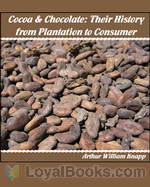 Cocoa and Chocolate: Their History from Plantation to Consumer
Cocoa and Chocolate: Their History from Plantation to Consumer
As that heavenly bit of chocolate melts in our mouths, we give little thought as to where it came from, the arduous work that went in to its creation, and the complex process of its maturation from a bean to the delicacy we all enjoy. This “little book” details everything you have ever wanted to know (and some things you never knew you wanted to know) about cocoa and chocolate from how the trees are planted and sustained to which countries produce the most cacao beans. Do cacao beans from various... | |
By: Arthur Wing Pinero (1855-1934) | |
|---|---|
 The Amazons: A Farcical Romance
The Amazons: A Farcical Romance
This 1895 farce inspired by the outlandish idea of women wearing pants, centers around the predicament of the three daughters of the eccentric Marchioness of Castlejordan, who determined to have sons, raised them like boys. She encouraged them to dress and act like boys at home, yet dress like ladies when out. As the girls come of age, they are conflicted. They want to please mother by acting as her sons, but, suddenly smitten with three gentlemen, they are compelled to grow up and be ladies. When their suitors secretly come to woo, they aren’t sure what to do……and what will mother do if she finds out? | |
 Magistrate
Magistrate
The success of “The Magistrate” was immediate, and the Court Theatre was crowded night after night for more than a year, the play being presented over 300 times. So prosperous was the run that there was no cessation during the Summer holiday season. This success, however, was not confined to London, for three companies were soon carrying the play triumphantly over the English provinces, while in September 1885 Mr. Pinero went to New York to produce his work. How can you resist a comedy whose... | |
 Schoolmistress
Schoolmistress
The second of Pinero's farces, following the wildly successful The Magistrate, and likewise a hit. The Schoolmistress has a secret: "Think of the deception I am practising upon dear Vere! Think of the people who believe in the rigid austerity of Caroline Dyott, Principal of Volumnia College. Think of the precious confidence reposed in me by the parents and relations of twenty-seven innocent pupils. Give an average of eight and a half relations to each pupil; multiply eight and a half by twenty-seven and you approximate the number whose trust I betray this night!" The three acts are subtitled 1 - The Mystery, 2 - The Party, and 3 - The Nightmare... | |
 Dandy Dick
Dandy Dick
“Dandy Dick” was the third of the farces which Mr. Pinero wrote for the old Court Theatre—a series of plays which, besides giving playgoers a fresh source of laughter, and the English stage a new order of comic play, brought plentiful prosperity to the joint management of Mr. Arthur Cecil and the late Mr. John Clayton. - Summary by Cast list: The Very Reverend Augustin Jedd, DD, Dean of St Marvells: ToddHW Sir Tristram Mardon, Bart: Son of the Exiles Major Tarver, -th Hussars, quartered at Durnstone near St Marvells: Craig Franklin Mr... | |
 Second Mrs. Tanqueray
Second Mrs. Tanqueray
Aubrey Tanqueray marries a woman with a past which he believes will not matter in society. "I know you think me a fool, Cayley—you needn't infer that I'm a coward into the bargain. No! I know what I'm doing, and I do it deliberately, defiantly. I'm alone; I injure no living soul by the step I'm going to take; and so you can't urge the one argument which might restrain me. Of course, I don't expect you to think compassionately, fairly even, of the woman whom I—whom I am drawn to— [] Thanks. I've heard you say that from forty till fifty a man is at heart either a stoic or a satyr... | |
 Trelawny of the Wells
Trelawny of the Wells
A theater, various actors and actresses, their admirers, financial backers, etc. The star Rose Trelawny wants to leave the stage for love, but it is not an easy thing to fit into conventional society after a life onstage. And not easy to go back to the stage either. - Summary by ToddHW Cast list: Tom Wrench: Tomas Peter Ferdinand Gadd: Roger Melin James Telfer: Patrick Wallace Augustus Colpoys: alanmapstone Rose Trelawny: Eva Davis Avonia Bunn: Leanne Yau Mrs Telfer : Susan Ferman Imogen Parrott:... | |
 Benefit of the Doubt
Benefit of the Doubt
The plot resolves around a young woman being cited in court as "The Other Woman" in a divorce case, and how her family reacts to it. Says her uncle: I shall go out; people shall see me walking boldly through the streets: Portland Place—Regent Street—Fletcher Portwood, with his head up—his head up, they’ll say. I shall not turn my back on you, my poor little girl; don’t be frightened of that. You were always my favourite niece— I shall dine at the House, and then sup at the club. All London shall see me... | |
 Letty
Letty
Letty is another one of Pinero's Social Plays, exposing the double standard of woman's reputations suffering for actions that in men were not only allowed, but even expected. Letty is a romantic shop assistant who considers bettering her station in life with a marriage to her employer. This play was filmed as a silent movie in 1919 as The Loves of Letty. - Summary by ToddHW Cast list: Nevill Letchmere: Tomas Peter Ivor Crosbie: Andrew Gaunce Coppinger Drake: artvo88 Bernard Mandeville: Alan Mapstone Richard Perry: ToddHW Neale, a Commercial Traveller: JoeBer Ordish, Agent for an Insurance Company: Greg Giordano Rugg, Mr... | |
 In Chancery
In Chancery
Subtitled "An Original Fantastic Comedy in Three Acts", this should be another enjoyable farce by Pinero, including memory loss, mistaken identity, crime and detection, romance, and many other of life's various complications. "Your husband?" "My husband!" "Begorra! It's not bigamy, but trigonometry, he's been attempting". - Summary by ToddHW Cast list: Captain Dionysius McCafferty : Larry Wilson Dr. Titus : Steven Fellows Montague Joliffe: ToddHW Mr. Hinxman: alanmapstone John : Tomas Peter Mr. Buzzard : Adrian Stephens Mr... | |
 Rocket
Rocket
Gentlemen out away from London, looking for wives. "I'm going to settle down, hearthrug and slippers and all that sort of thing." "So a lot of us have made up our minds to marry and retire from public life, and as I couldn't find any suitable partie in London - ." Add lost relatives, over protective fathers, a rich widow or two, and you have all the ingredients for a first rate farce. - Summary by ToddHW Cast list: Lord Leadenhall: Adrian Stephens The Chevalier Walkinshaw: Rob Marland John Mable:... | |
 Money-Spinner
Money-Spinner
When his younger brother incurs a large betting debt, what could be easier than for a man to borrow the money to save him from the factory he runs while his employers are away. Whoops; his employers are coming back before he has repaid the money. Ah, perhaps his wife can get the money from a friendly Lord who was once her suitor.... A friendly card game perhaps. What could go wrong? - Summary by ToddHW Cast list: Lord Kengussie: Son of the Exiles Baron Croodle: ToddHW Harold Boycott: Mark Nelson Jules Faubert: Alan Mapstone Millicent Boycott: Sonia Dorinda Croodle: Jenn Broda Margot: Adrian Stephens Stage Directions: MichaelMaggs Editing: ToddHW | |
 Hobby-Horse
Hobby-Horse
A man's wife is caught up in Philanthropy, generously supporting all sorts of good causes. But that does not include her husband's interests in "the Turf or the Stable - no feeling except one of positive distaste." So what is he to do? How about somehow getting her to "endow a Home for about twenty decayed jockeys and stablemen ... who have outlived their chances on the turf and fallen on bad days?" Sounds very noble, but of course that is not quite what he has in mind.... - Summary by ToddHW Cast... | |
 Sweet Lavender
Sweet Lavender
"Sweet Lavender" must be regarded as one of the most successful stage-plays of modern times, and there can be no question that it has proved so far the most popular of Mr. Pinero's works. Its representations may be counted by the thousand, and its popularity has extended over many latitudes. The reason of this is not far to seek: it proclaims itself in the gentle humanity and genial humour of the play. ... a sort of modern fairy tale." - Summary by Malcom C. Salaman, October 1893 Cast list: Horace Bream : Matthew Reece Geoffrey Wedderburn : ToddHW Clement Hale : Karsus Richard Phenyl : Andrew James Dr... | |
 Weaker Sex
Weaker Sex
Mrs. Boyle-Chewton and her cause - the Advancement of Women from the Rear to the Van. Lady Vivash, new recruit to the cause. Their daughters Sylvia and Rhoda. Mr. Bargus, Member of Parliament for the Skipping-Molton Division of Cuddleford, who is about to declare his adherence to the cause. Ira Lee, The Poet of The Prairies from West of the Colorado Mountains. New loves. Lost loves. Lords, Ladies, Honorables. Extravagant hopeless passions... - Summary by ToddHW Cast list: Ira Lee: Tomas Peter Lady Vivash: Sonia Sylvia : Jenn Broda Dudley Silchester: Adrian Stephens Mrs... | |
 Times
Times
Percy Egerton-Bompas, M.P., and Mrs Bompas have secrets in their family. Which promise grave difficulties as they try to marry off their daughter. To say nothing of the potential political implications to a promising career.... A comedy. Which, with Pinero, does not preclude serious topics being seriously addressed. - Summary by ToddHW Cast list: Percy Egerton-Bompas, M.P.: Adrian Stephens Mrs. Egerton-Bompas: Sonia Howard, their son: Dale Burgess Beryl, their daughter: thestorygirl Countess of Ripstow: TJ Burns Denham, Viscount Lurgashall, her son: Tomas Peter Hon... | |
 Princess and the Butterfly
Princess and the Butterfly
The English-born Princess Pannonia had spent the twenty years of her marriage isolated in the Prince's remote Hungarian castle. Now widowed, she returns to London to re-engage with former friends, all fearfully facing middle-age. Can romance be rekindled with a former flame? Or will it be found with someone new or perhaps someone overlooked before? - Summary by ToddHW Cast list: Princess Pannonia: awonski Sir George Lamorant, Bart.: Greg Giordano Fay Zuliani: Jenn Broda Edward Oriel: Tomas Peter Blanche Oriel: Michele Eaton Lady Ringstead: Sonia Mr... | |
 Freaks: An Idyll of Suburbia
Freaks: An Idyll of Suburbia
When Mrs. Herrick's brother Charlie dies, he leaves his money in trust for members of the circus he used to own under the name of "Segantini's World Renowned Mammoth International Hippodrome and Museum of Living Marvels". When five of the Extraordinary Mortals of the circus show up to visit with the Ordinary Mortals at Mrs. Herrick's country house, there is a clash of cultures.... - Summary by ToddHW Cast list: Ordinary Mortals: Mrs. Herrick, nee Smith : Linda Webster Ronald : Adrian Stephens Sheila : Matea Bracic Lady Ball-Jennings : Sonia Sir Norton Ball-Jennings : Alan Mapstone Reverend Stephen Glyn : Greg Giordano Mr... | |
 Iris
Iris
Left a widow 5 years ago at age 21, Iris Bellamy is shackled by terms of her husband's will that would leave her penniless if she remarries. Of course, "if she married a rich man, her interest in her late husband's estate would be no longer indispensible to her." But "rich men generally have some odious quality to counterbalance their wealth. The men one would marry are as poor as mice." So what do you think is likely to happen? - Summary by ToddHW Cast list: Frederick Maldonado: Adrian Stephens Laurence Trenwith: Tomas Peter Croker Harrington: ToddHW Archibald Kane: Alan Mapstone Colonel Wynning: Algy Pug Servant at Mrs... | |
 Wife Without A Smile
Wife Without A Smile
Mr. Rippingill can not get his wife to relax her stony features and smile. Maybe even laugh. "Avis - Lady Whitstable and the pickled salmon. Now consider for a moment, my pet - reflect. What a grotesque contrast! A fine, crusted specimen of our English aristocracy and - pickled fish! The mere contemplation of two images so violently opposed in itself makes for mirth. Doesn't it dearest?" But it is tough going. So he tries to.... - Summary by ToddHW Cast list: Seymour Rippingill: Greg Giordano Haynes Webbmarsh: Alan Mapstone Vivian Trood: Tomas Peter John Pullinger: ToddHW Foley: James R... | |
By: Arthur Young (1741-1820) | |
|---|---|
 Travels in France During the Years 1787, 1788, 1789
Travels in France During the Years 1787, 1788, 1789
Arthur Young, an English agriculturist, set out to write a travelogue on the state of agriculture in France and found himself in the midst of the French Revolution. His report on life in the capital and in the countryside in the years 1787, 1788, and 1789, replete with droll traveler's mishaps, becomes an eyewitness account of a society on the brink of catastrophe. From the court scene at Versailles to backroads villages comes this astonishing record of unfolding events, conspiracy theories about the queen, jubilation, and mass hysteria. | |
By: Asa Don Dickinson (1876-1960) | |
|---|---|
 The Children's Book of Christmas Stories
The Children's Book of Christmas Stories
Many librarians have felt the need and expressed the desire for a select collection of children's Christmas stories in one volume. This book claims to be just that and nothing more. Each of the stories has already won the approval of thousands of children, and each is fraught with the true Christmas spirit. It is hoped that the collection will prove equally acceptable to parents, teachers, and librarians. | |
 Good Cheer Stories Every Child Should Know
Good Cheer Stories Every Child Should Know
This charming book has many stories that deal mostly with the holiday of Thanksgiving, perfectly suited for family listening and reading. and gathers in one volume tales of tasty turkeys, festive parties, generous gestures, and holiday cheer. The stories featured include works by such writers as Harriet Beecher Stowe, George Eliot, Nathaniel Hawthorne, and others. So if you want to listen to some great stories that bring out gratitude for life and a thanksgiving attitude, here are a bunch of the best. | |
 Children's Book of Christmas Stories (Version 2)
Children's Book of Christmas Stories (Version 2)
This books is a select collection of Christmas Stories in one volume. It is just that and nothing more. Each of the stories has already won the approval of thousands of children, and each is fraught with the true Christmas spirit. It is hoped that the collection will prove equally acceptable to parents, teachers, and librarians. - Summary from the preface | |
By: Asa Gray (1810-1888) | |
|---|---|
 Natural Science and Religion
Natural Science and Religion
Asa Gray was a highly-regarded botanist at Harvard University and a friend and collaborator of Charles Darwin. As a Christian, Gray was concerned with the disconnect developing through the nineteenth century between the growing understanding of the natural world and the traditional worldview assumed by orthodox Christianity. This book presents two lectures he gave to theology students at Yale College in which he argues that a disconnect is not inevitable, but that a Christian perspective can and should incorporate current understanding of the world provided by natural science. - Summary by BarryGanong | |
By: Asser, Bishop of Sherborne | |
|---|---|
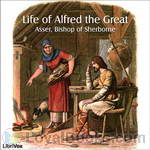 Life of Alfred the Great
Life of Alfred the Great
A life of King Alfred of England originally composed in Latin, possibly sometime around 888 A.D. by the Monk and Bishop Asser, although some scholars contend that the work was actually composed much later by an unknown hand. | |
By: Athanasius of Alexandria (297-373) | |
|---|---|
 Contra Gentes
Contra Gentes
Contra Gentes is the first of a two volume work published by Athanasius of Alexandria prior to the outbreak of the Arian controversy (ca. 319). It focuses especially on pagan beliefs and worship concluding with a defense of the Christian view of God and creation -- especially creation by the eternal Word. In this way, the ground is prepared for the second volume of his work, now published separately under the title De Incarnatione Verbi. | |
 On the Incarnation
On the Incarnation
This treatise and that which in the editions of Athanasius immediately precedes it, the contra Gentes, were often counted as two parts of a single work. The two books belong to the earlier years of Athanasius: the Arian controversy which broke out about 319 has left no trace upon them. The Contra Gentes leaves the reader face to face with this necessity of restoration by the Divine Word as the remedy for corrupt human nature. How this necessity is met in the Incarnation is shown in the pages which follow... | |
 Later Treatises of Saint Athanasius, Archbishop of Alexandria
Later Treatises of Saint Athanasius, Archbishop of Alexandria
The times, for which God raised up Saint Athanasius, have, in many respects, a counterpart in our own. There is, now too, earnest, ever-enlarging, adherence to the faith, in those who hold it. But there is also a wide-spread dislike of definite doctrine, such as found a vent in the different shades of Arianism. They framed eleven Creeds, to satisfy themselves or others, over-against the one faith, put forth at Nicaea and accepted by the whole Church. They swung to and fro, at times approximating nearer to the truth; but their secret maxim, unknown to themselves, was, "anything but the Truth"... | |
 Life of Anthony (Version 2)
Life of Anthony (Version 2)
The Life Of St. Anthony the Great. | |
By: Auberon Edward William Molyneux Herbert (1838-1906) | |
|---|---|
 Windfall and Waterdrift
Windfall and Waterdrift
This little square book, the colour of meadow forget-me-nots, is so modest and simple that it may very easily be passed over in a period which has little sympathy with tenderness of feeling and simplicity of expression. The verses, of which this small volume is full, resemble the stornelli and rispetti of Italian songs rather than any kind of verse which has preceded them in English literature, unless it be the earliest and briefest songs of Robert Lytton, with which they have a certain kindred, both in their measure and in their themes... | |
By: August F. Jaccaci | |
|---|---|
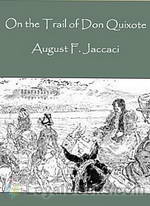 On the Trail of Don Quixote, Being a Record of Rambles in the Ancient Province of La Mancha
On the Trail of Don Quixote, Being a Record of Rambles in the Ancient Province of La Mancha
On the Trail of Don Quixote is an engaging 1890’s “record of rambles in the Ancient Province of La Mancha” by two artist friends, French author August Jaccaci and Spanish illustrator Daniel Vierge. “Both lovers of the book wherein are recounted the adventures of the good Knight and of his faithful Squire,” as Jaccaci explains, the two men set out to record -Jaccaci in evocative prose, and Vierge in pen and ink drawings - their exploration of the landmarks of Cervantes’ “immortal romance... | |
By: August Strindberg (1849-1912) | |
|---|---|
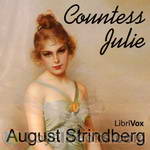 Countess Julie
Countess Julie
August Strindberg’s naturalistic one-act drama has only three characters: Julie, a passionate young noblewoman; Jean, her father’s ambitious valet; and Kristin, the cook, who is also Jean’s fiancee. The play is set on Midsummer Eve, when everyone is reveling, and Julie and Jean get a bit too intimate – with tragic results. | |
 Creditors
Creditors
Creditors is an 1889 tragicomedy by August Strindberg that plumbs the depths of the twisted triangular relationship between Tekla, her husband Adolph, and her ex-husband Gustav. | |
 The Red Room
The Red Room
A young idealistic civil servant, Arvid Falk, leaves the drudgery of bureaucracy to become a journalist and author. As he explores various social activities — politics, publishing, theatre, philanthropy, and business — he finds more hypocrisy and corruption than he thought possible. He takes refuge with a group of "bohemians", who meet in a red dining room in Berns Salonger to discuss these matters. (Introduction adopted from Wikipedia) | |
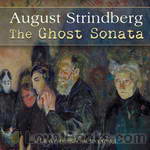 The Ghost Sonata
The Ghost Sonata
The Ghost Sonata (Spoksonaten) is a play in three acts by Swedish playwright August Strindberg. Written in 1907, it was first produced at Strindberg's Intimate Theatre in Stockholm on 21 January 1908... The Ghost Sonata is a key text in the development of modernist drama and a vivid example of a chamber play. In it, Strindberg creates a world in which ghosts walk in bright daylight, a beautiful woman is transformed into a mummy and lives in the closet, and the household cook sucks all the nourishment out of the food before she serves it to her masters... | |
 There are Crimes and Crimes
There are Crimes and Crimes
| |
 Dream Play
Dream Play
A Dream Play (Swedish: Ett drömspel) was written in 1901 by the Swedish playwright August Strindberg. It was first performed in Stockholm on 17 April 1907. It remains one of Strindberg's most admired and influential dramas, seen as an important precursor to both dramatic Expressionism and Surrealism. The primary character in the play is Agnes, a daughter of the Vedic god Indra. She descends to Earth to bear witness to problems of human beings. She meets about 40 characters, some of them having a clearly symbolical value (such as four deans representing theology, philosophy, medicine, and law)... | |
 Growth of a Soul
Growth of a Soul
Johan August Strindberg was a Swedish playwright who has had many of his works read into Librivox by volunteers. From his earliest work, Strindberg developed forms of dramatic action, language, and visual composition so innovative that many were to become technically possible to stage only with the advent of film. He is considered the "father" of modern Swedish literature. The Growth of a Soul is Strindberg's own literary autobiography and recreation of the spirit of the times at Upsala University and his attempts to become a literary artist... | |
 Father
Father
The Father is a naturalistic drama by Swedish playwright August Strindberg. The central conflict is between the Captain and his wife Laura about their daughter Bertha's future. In order to gain sole custody of her daughter, Laura tries to convince the Captain that he has gone mad. | |
 Dance of Death
Dance of Death
The Dance of Death is a play in two parts by the Swedish dramatist August Strindberg, written in 1900. It depicts the dissolution of a marriage between Edgar, an artillery captain, and Alice, a former actress. Increasingly isolated in their fort-like house, they manipulate and bait each other, until the unexpected arrival of Curt, Alice's cousin. His presence creates a tense triangular relationship that escalates throughout Part One, and is complicated with the introduction of two of the trio's children, Allan and Judith, in Part Two. | |
By: August von Kotzebue (1761-1819) | |
|---|---|
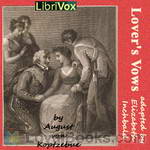 Lover's Vows
Lover's Vows
Lovers' Vows (1798), a play by Elizabeth Inchbald arguably best known now for having been featured in Jane Austen's novel Mansfield Park (1814), is one of at least four adaptations of August von Kotzebue's Das Kind der Liebe (1780; literally "Child of Love," or "Natural Son," as it is often translated), all of which were published between 1798 and 1800. Inchbald's version is the only one to have been performed. Dealing as it does with sex outside marriage and illegitimate birth, Inchbald in the Preface to the published version declares herself to have been highly sensitive to the task of adapting the original German text for "an English audience... | |
By: Augusta Groner (1850-1929) | |
|---|---|
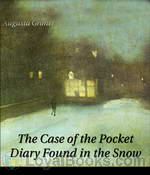 The Case of the Pocket Diary Found in the Snow
The Case of the Pocket Diary Found in the Snow
The account of some adventures in the professional experience of a member of the Imperial Austrian Police. (from the text) | |
 Case Of The Registered Letter
Case Of The Registered Letter
A man is found shot dead and the man to whom all evidence points insists he is innocent. | |
By: Augusta Huiell Seaman (1879-1950) | |
|---|---|
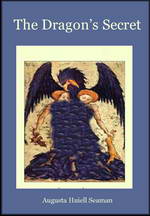 The Dragon's Secret
The Dragon's Secret
Sixteen year old Leslie Crane has come to the New Jersey shore as a companion to ailing Aunt Marcia, whose doctor has sent her there for a some quiet rest and recuperation. While the beach is lovely in October, Leslie quickly finds herself getting lonely with no one her own age to talk to. Little does she realize that she will not only soon make a new friend, but that they will both end up in the midst of a puzzling mystery centered around the closed up bungalow next door. Augusta Huiell Seaman is the author of over 40 historical fiction and mystery novels for older children most of which are currently out of print. The Dragon’s Secret was originally published in 1921. | |
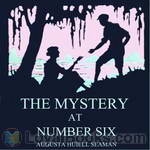 The Mystery at Number Six
The Mystery at Number Six
A mysterious girl, a mysterious pool, and a mysterious businessman combine to send two Florida teens to adventureland in this pre-Nancy Drew tale for young people | |
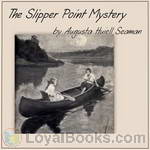 The Slipper Point Mystery
The Slipper Point Mystery
When fourteen year old Sally Carter decides to share the secret she has discovered on Slipper Point with her new friend Doris Craig, she couldn’t possibly imagine where the solution to this intriguing mystery will lead them! Augusta Huiell Seaman is the author of over 40 historical fiction and mystery novels for older children most of which are currently out of print. The Slipper Point Mystery was originally published in 1919. | |
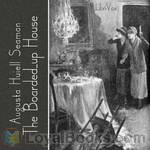 The Boarded Up House
The Boarded Up House
What is the secret of the old boarded up house? And what is the answer to the mystery of the long lost letter that is found in it? Best friends Joyce and Cynthia - along with their dog "Goliath", are determined to find out in this pre-Nancy Drew juvenile mystery for girls.Augusta Huiell Seaman was the author of over 40 historical fiction and mystery novels for older children. | |
 Girl Next Door
Girl Next Door
Marcia Brett has noticed unusual activity at the ramshackle and seemingly abandoned mansion next door: a mysterious, veiled lady is seen coming and going out the front door, a different woman is glimpsed through a shuttered window, and most mysterious of all, a pretty, blond girl is seen briefly looking forlornly out an upper window! Along with her best friend, Janet McNeil, the two girls are determined to learn the secrets of the old house and befriend the young girl, but once they do, the secrets only increase. The girl has no idea why she is at this house or even who the women she is living with are! Has she been kidnapped? Are they relatives? No one seems to know. | |
By: Augusta Stevenson (1869-1976) | |
|---|---|
 Children's Classics in Dramatic Form
Children's Classics in Dramatic Form
| |
By: Augusta Webster (1837-1894) | |
|---|---|
 Mother and Daughter
Mother and Daughter
Uncompleted at her death, Augusta Webster's posthumously published sonnet sequence Mother and Daughter celebrates the relationship between a mother and her only child. As well as reflecting on aging and mortality, the sonnets express joy and love. This volume includes seven additional sonnets on other themes. | |
 English Stornelli
English Stornelli
In this sequence Augusta Webster experimented with eight-line verses grouped thematically by the seasons of the year. These poems also explore the cyclical stages of life from youth, courtship and parenthood through age and loss. Summary by Newgatenovelist. | |
By: Auguste Comte (1798-1857) | |
|---|---|
 General View of Positivism
General View of Positivism
Auguste Comte was from France and published this book in French in 1844. He made a very great impact on the sciences and claims to have “discovered the principal laws of Sociology." Comte says Reason has become habituated to revolt but that doesn’t mean it will always retain its revolutionary character. He discusses Science, the trade-unions, Proletariat workers, Communists, Capitalists, Republicans, the role of woman in society, the elevation of Social Feeling over Self-love, and the Catholic Church in this book... | |
By: Auguste Escoffier (1846-1935) | |
|---|---|
 Guide to Modern Cookery (Le Guide Culinaire) Part I: Fundamental Elements
Guide to Modern Cookery (Le Guide Culinaire) Part I: Fundamental Elements
Le Guide Culinaire can be regarded as the ‘Bible’ of modern cooking. It was Escoffier's attempt to codify and streamline the French restaurant food of the day. The original text was printed for the use of professional chefs and kitchen staff; Escoffier's introduction to the first edition explains his intention that the book be used toward the education of the younger generation of cooks. This usage of the book still holds today; many culinary schools still use it as their core textbook. The book overall is 900 pages long and contains over 2500 recipes... | |
By: Auguste Groner (1850-1929) | |
|---|---|
 Lady in Blue
Lady in Blue
A Joseph Muller Mystery originally published in 1905 in German as "Die blaue Dame" . Translated by American writer and translator, Grace Isabel Colbron in 1922 as The Lady in Blue. A mysterious old house, an unexplained scream in the night, the death of a beautiful young girl. Was it suicide? Or something more sinister at work? - Summary by J.M.Smallheer | |
 Man with the Black Cord
Man with the Black Cord
A baffling disappearance. A bedroom door locked from the inside. A housekeeper with something to hide. Will retired policeman turned private detective, Joseph Muller, be able to sort out the clues and solve this locked room mystery? Summary by J. M. Smallheer | |
By: Augustin Daly (1838-1899) | |
|---|---|
 Night Off; or A Page From Balzac
Night Off; or A Page From Balzac
There are a number of subplots going on in this play. The Professor has unearthed a play that he wrote back in his University days. He has read it to his housekeeper while his wife was away at the expensive spa ... she disapproves of the theatre ... and said housekeeper was so fascinated by it that when a travelling dramatic troupe manager lobs into town, the Professor is receptive to the manager's manipulative and unscrupulous offer to put on his play. Meanwhile, one of the Professor's daughters has chanced across a page from Balzac which states "Every bride that lives if she could but know the past and secret life of her husband would renounce him even at the steps of the altar... | |
By: Augustine Berthe | |
|---|---|
 Garcia Moreno, President of Ecuador 1821-1875
Garcia Moreno, President of Ecuador 1821-1875
Gabriel Gregorio Fernando José María García y Moreno y Morán de Buitrón (1821–1875) was an Ecuadorian politician who twice served as President of Ecuador (1859-1865 and 1869-1875) and was assassinated during his second term, after being elected to a third term. He is noted for his conservatism, Catholic religious perspective and rivalry with liberal strongman Eloy Alfaro. Under his administration, Ecuador became a leader in science and higher education within Latin America. In addition to... | |
By: Augustine T. Smythe (1830-1914) | |
|---|---|
 Who Burnt Columbia?
Who Burnt Columbia?
This Librivox reading consists of selections from depositions in a lawsuit brought after the end of the American Civil War by some businessmen of the former Confederacy. This reading focuses on the sworn statements of General William Tecumseh Sherman who commanded the Carolinas campaign and General Oliver O. Howard who was one of Sherman’s subordinate commanders. The subject is the still-controversial burning of Columbia, capital of South Carolina, toward the end of the Civil War. “Official Depositions of Wm, Tecumseh Sherman, “General of the Army of the United States,” and Gen... | |
By: Augustus M. Toplady (1740-1778) | |
|---|---|
 Observations and Reflections
Observations and Reflections
These considerations by Mr. Toplady, and the extracts, are arranged under their respective heads. Diamonds never appear so splendid, as when set in a crown. However, when thrown in confusion, they are still jewels, and therefore worth the gathering. -- From these brilliants a bouquet is made up, for the gratification of the reader. - Summary by the Editor | |
By: Augustus Mayhew (1826-1875) | |
|---|---|
 Paved With Gold
Paved With Gold
The expressed goal of this book is to "write a truthful account of the miseries of criminal life" . Thus, this book tells the story of Philip, a child who grew up in the workhouse until running away to navigate the streets of London on his own. "Paved With Gold", or, the Romance and Reality of the London Streets is one of the most vivid books you would ever read. So hold tight and enjoy the ride. - Summary by Stav Nisser | |
By: Austen Layard (1817-1894) | |
|---|---|
 Discoveries Among the Ruins of Nineveh and Babylon
Discoveries Among the Ruins of Nineveh and Babylon
Austen Henry Layard is best known as the excavator of Nimrud and of Nineveh, where he uncovered a large proportion of the Assyrian palace reliefs known, and in 1851 the library of Ashurbanipal. The Royal Library of Ashurbanipal, named after Ashurbanipal, the last great king of the Assyrian Empire, is a collection of thousands of clay tablets and fragments containing texts of all kinds from the 7th century BC. Among its holdings was the famous Epic of Gilgamesh.In this work, he describes his experiences upon his return to the region for a second expedition. - Summary by Soupy Proof-listened by Elijah Fisher and TriciaG. | |
By: Austin Bishop | |
|---|---|
 Tom of the Raiders
Tom of the Raiders
Young Adult historical fiction of a young man joining the Union Army and taking part in the Great Locomotive Chase. | |
By: Austin Craig | |
|---|---|
 Lineage, Life and Labors of Jose Rizal
Lineage, Life and Labors of Jose Rizal
LINEAGE LIFE AND LABORS of JOSE RIZAL PHILIPPINE PATRIOTBY AUSTIN CRAIGINTRODUCTION In writing a biography, the author, if he be discriminating, selects, with great care, the salient features of the life story of the one whom he deems worthy of being portrayed as a person possessed of preeminent qualities that make for a character and greatness. Indeed to write biography at all, one should have that nice sense of proportion that makes him instinctively seize upon only those points that do advance his theme... | |
By: Austin L. Rand (1905-1982) | |
|---|---|
 Stray Feathers From a Bird Man's Desk
Stray Feathers From a Bird Man's Desk
Canadian zoologist, Austin L. Rand, takes a divergence from his scholarly works on ornithology to give us 60 entertaining sketches of bird life and lore from Birds Bathing to Courtship Feeding. From the author's introduction: "In looking back over the preparation of these sketches I feel as though each evening I'd gathered up the bits and pieces left over from the day's work and fashioned them into designs for my own amusement and the edification of my family. Truly it's as though I'd used stray feathers, fallen from the bird skins I'd handled, and fitted them together into something of wider interest than the original... | |
By: Austin Patrick Corcoran (1890-1928) | |
|---|---|
 Daredevil of the Army - Experiences as a ''Buzzer'' and Despatch Rider
Daredevil of the Army - Experiences as a ''Buzzer'' and Despatch Rider
At just twenty-six years of age, the author – A P Corcoran had already led an adventurous life, having twice sailed around the world, experiencing many cultures and civilisations, journeyed and hunted through the heart of Africa, worked on a ranch in Bolivia and travelled throughout Europe. With Austria and Serbia on the brink of war and both Germany and France preparing for imminent hostilities, he managed to escape back to England just in time to hear the first cry for volunteers to join the British Army... | |
By: Avery Hopwood (1882-1928) | |
|---|---|
 Bat (Version 2 Dramatic Reading)
Bat (Version 2 Dramatic Reading)
A Mysterious killer—Man? Beast? Or devil?—spreading terror throughout a nation, flouting law and lawless alike … Curious GOINGS-ON in a house rented immediately upon the death of its owner … A WARNING to leave the house, underlined with threats of death … A SHADOW bearing one gleaming eye [ … ] Wouldn’t You Like to Know – What happens when the indomitable Miss Van Gorder refuses to be frightened from the house of murder? What nerve-shaking word is spelled out by the Ouija board? [ … ] Who is the stranger who arrives half dead? Who is the Bat?” ~ from the ad in the book... | |
By: Ayn Rand (1905-1982) | |
|---|---|
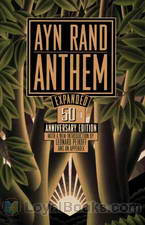 Anthem
Anthem
The title 'Anthem' is derived as an anthem to sense of self and self-governing thoughts. Anthem is a story of Equality 7-2521 who is a young man living in some unspecified future time and place. In this future era freedom and individual rights have been eradicated. The starring character of the novel is an inquisitive street cleaner. He lives in a society where people have lost their knowledge of individualism, to the extreme that people do not know words like 'I' or 'mine'. All the people live and work for their livelihood in collective groups, along with the people with power, namely the 'Councils'... | |
By: B. F. Gandee | |
|---|---|
 Artist
Artist
The Artist, or Young Ladies' Instructor in Ornamental Painting, Drawing etc. is a delightful art instruction book from 1835. Follow Charlotte as she teaches her cousin Ellen a range of art forms that were widely taught at the time, from painting in the Grecian and Japanese style, to Oriental and Mezzotinting, as well as Inlaying. A few simple projects with paper are mentioned at the end of the book. - Summary by Ava Cast: Mamma read by LCaulkins Ellen read by MrsHand Charlotte read by Availle Narration and Preface and Epilogue by ToddHW | |
By: B. G. Jefferis and J. L. Nichols | |
|---|---|
 Searchlights on Health
Searchlights on Health
SEARCHLIGHTS ON HEALTH. THE SCIENCE OF EUGENICSBy PROF. B.G. JEFFERIS, M.D., PH. D. KNOWLEDGE IS SAFETY. 1. The old maxim, that Knowledge is power, is a true one, but there is still a greater truth: KNOWLEDGE IS SAFETY. Safety amid physical ills that beset mankind, and safety amid the moral pitfalls that surround so many young people, is the great crying demand of the age. 2. CRITICISM.--This work, though plain and to some extent startling, is chaste, practical and to the point, and will be a boon and a blessing to thousands who consult its pages... | |
By: B. H. Roberts (1857-1933) | |
|---|---|
 Mormon Battalion, Its History and Achievements
Mormon Battalion, Its History and Achievements
A history of the Longest March of Military in History. The Mormon Battalion was the only religious unit in United States military history in federal service, recruited solely from one religious body and having a religious title as the unit designation. In 1847, as the Mormons were in Iowa heading West, after being driven out of their homes in Nauvoo, Illinois, the U.S. Army requested 500 volunteers to assist in the Mexican-American War effort. From July 1847 to July 1848 the battalion made a grueling march of nearly 2,100 miles from Council Bluffs, Iowa, to San Diego, California... | |
By: B. J. Farjeon (1838-1903) | |
|---|---|
 House of the White Shadows
House of the White Shadows
Is a defense attorney bound to defend his client, or with his conscience, when he knows that the man he is defending is guilty of the charges against him after the trial has already commenced? And if friends hold a belief that he may have been aware of it before the trial commenced, yet they are endeared to the man and his family as upstanding and of the highest grade? Might it not become cause for blackmail, and therefore potential retribution? "The House of White Shadows" brings these issues to the forefront, while the reader learns of the background of the advocate, his family history, and the house in question... | |
By: B. J. Griswold | |
|---|---|
 Crayon and Character
Crayon and Character
CRAYON AND CHARACTERTruth Made Clear Through Eye and EarBy B.J. GRISWOLDThe Plan of the Book In the preparation of this book the author has had two great plans in mind: To prepare a work which will enable any person, who can speak to a class or an audience, to give a helpful, inspiring illustrated talk; to place in the hands of parents everywhere a book to enable them to teach the children a simple, fascinating method of drawing and, at the same time make the great truths of life a part of their every-day learning... | |
By: B. L. Farjeon (1838-1903) | |
|---|---|
 Devlin the Barber
Devlin the Barber
The stabbing death of a beautiful young woman in a London park at night and the disappearance of her sister; a shocked and heartbroken young suitor; a terrified landlady and her simple husband; a recently unemployed man, the narrator, who is requested to investigate the crime; and the mysterious title character who, as his name suggests, has a devilishness about him in his psychic ability to read minds and to perform other supernatural acts. These are some of the individuals in this inventive, absorbing mystery by the prolific and popular British author, B. L. Farjeon. There are really two mysteries here: the murder and the strange – person? – known as Devlin. | |
By: B. M. Bower (1871-1940) | |
|---|---|
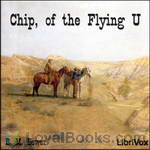 Chip, of the Flying U
Chip, of the Flying U
Cattleman J.G. Whittemore, owner of the Flying U ranch in Montana, trusts the task of meeting his sister at the train to only one man, Chip. Chip’s not too keen on women. In his experience they come in only a few types: prissy “sweet young thing”, annoying cowgirl, or old maid that wants to drag him to church. He isn’t prepared for Miss Della Whittemore, the “Little Doctor.” She turns the ranch upside down, but can she turn Chip head over heels? | |
 Lure of the Dim Trails
Lure of the Dim Trails
Phil Thurston was born on the range where the trails are dim and silent under the big sky. It was the place his father loved, the place he had to be. After the death of his father when he was five, his mother brought him back to the city, where he grew up and became a writer. To revive his stale writing, he returns to the West, and may just find what he is really missing. | |
 Meadowlark Basin
Meadowlark Basin
This is an action-packed tale of the old west with richly drawn characters including the notorious Butch Cassidy, most of them upstanding but some decidedly not. A cashier is murdered during a bank robbery. The loot and the thieves are sought with dark concerns about who may be guilty. Family ties, ranch life, humor, and romance are interwoven throughout. B. M. Bower was one of the first women to write novels and short stories about the American Old West, of which more than 10 were adapted as films. | |
By: Baba Premanand Bharati (1857-1914) | |
|---|---|
 Sree Krishna, The Lord of Love
Sree Krishna, The Lord of Love
I beg to present this my humble work to the English reader. It is the history of the Universe from its birth to its dissolution. I have explained the science of creation, its making and its mechanism. In doing so I have drawn my information from the recorded facts in the Sacred Books of the Root Race of mankind. Some facts and explanations are herein furnished for the first time in any modern language. This book embodies true Hinduism. | |
By: Bahá'u'lláh | |
|---|---|
 The Arabic Hidden Words
The Arabic Hidden Words
Kalimát-i-Maknúnih or The Hidden Words is a book written in Baghdad around 1857 by Bahá'u'lláh, the founder of the Bahá'í Faith. This work is written partly in Arabic and partly in Persian. The Hidden Words is written in the form of a collection of short utterances, 71 in Arabic and 82 in Persian, in which Bahá'u'lláh claims to have taken the basic essence of certain spiritual truths and written them in brief form. Bahá'ís are advised by `Abdu'l-Bahá, the son of Bahá'u'lláh to read them every day and every night and to implement its latent wisdom into their daily lives... | |
By: Bahá’u'lláh | |
|---|---|
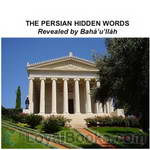 The Persian Hidden Words
The Persian Hidden Words
Kalimát-i-Maknúnih or The Hidden Words is a book written in Baghdad around 1857 by Bahá’u'lláh, the founder of the Bahá’í Faith. This work is written partly in Arabic and partly in Persian. The Hidden Words is written in the form of a collection of short utterances, 71 in Arabic and 82 in Persian, in which Bahá’u'lláh claims to have taken the basic essence of certain spiritual truths and written them in brief form. Bahá’ís are advised by `Abdu’l-Bahá, the son of Bahá’u'lláh to read them every day and every night and to implement its latent wisdom into their daily lives... | |
By: Bankim Chandra Chatterjee (1838-1894) | |
|---|---|
 Kopal-Kundala
Kopal-Kundala
A story of love and innocence, by one of India's most loved novelist/ poets of the 20th century, the mentor of Rabindrath Tagore. | |
By: Barbara Baynton (1857-1929) | |
|---|---|
 Human Toll
Human Toll
Ursula (Ursie) Ewart, orphaned as a young child, is sent away from her home in the Australian bush. While Ursie was previously doted on by station hands, Boshy, Nungi,and Queeby, at her new home, in a nearby country town, she is barely tolerated. Her only confidante is Andrew (Andree), an older child in the same household. In Human Toll, Barbara Baynton builds on her observations in Bush Studies to provide further insight into women's experience of Australian bush life and culture at the turn of the 20th century. (written by Kirsty Leishman) | |
 Bush Studies
Bush Studies
Bush Studies is a short story collection published in London in 1902. Baynton presents a grimly realist view of bush life in Australia for women in colonial Australia. She wrote in response to Henry Lawson's romantic depiction of bush life during the same era. | |
By: Barbara Hofland (1770-1844) | |
|---|---|
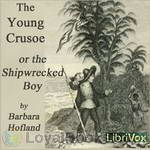 The Young Crusoe, or The Shipwrecked Boy
The Young Crusoe, or The Shipwrecked Boy
The Young Crusoe, or The Shipwrecked Boy (1829) Novel. At the novel's opening, Charles Crusoe, thirteen years of age, asks his mother if he is related to the famous Robinson Crusoe, and is told that he is not. His future adventures, however, strongly resemble those of the earlier Crusoe. | |
 The Barbadoes Girl
The Barbadoes Girl
Matilda Sophia Hanson, whose father has recently died in their country of Barbadoes in the West Indies, must live for a time with family friends in England. The Harewood family is astonished at how spoiled, rude, and uneducated the child is. However, with seemingly endless patience and love, they help Matilda work to conquer her bad temper, and become a sensible, good, and well-informed young lady. This story reminds children and adults alike, though you have many battles with yourself, you must never relinquish hope and be assured you will find every victory easier than the last... | |
By: Baron Ludvig Holberg (1684-1754) | |
|---|---|
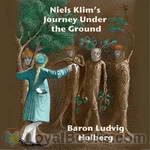 Niels Klim's Journey Under the Ground
Niels Klim's Journey Under the Ground
Niels Klim’s Underground Travels, originally published in Latin as “Nicolai Klimii Iter Subterraneum” (1741) is a satirical science-fiction/fantasy novel written by Ludvig Holberg, a Norwegian-Danish dramatist, historian, and essayist, born in Bergen, Norway. It was his first and only novel. It describes a utopian society from an outsider’s point of view, and often pokes fun at diverse cultural and social topics such as moral, science, sexual equality, religion, governments, and philosophy. | |
By: Baron Paul Henri Thiry d'Holbach (1723-1789) | |
|---|---|
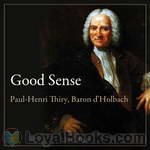 Good Sense
Good Sense
In 1770, Baron D'Holbach published his masterpiece, "Systeme de la Nature", which for a long time passed as the posthumous work of M. de Mirabaud. That text-book of "Atheistical Philosophy" caused a great sensation, and two years later, 1772, the Baron published this excellent abridgment of it, freed from arbitrary ideas; and by its clearness of expression, facility, and precision of style, rendered it most suitable for the average student. This text is based on an undated English translation of "Le Bon Sens" published c. 1900. The name of the translator was not stated. | |
By: Baroness Emma Orczy (1865-1947) | |
|---|---|
 Unravelled Knots
Unravelled Knots
Unravelled Knots is the third and final installment of the Old Man in the Corner stories by Baroness Orczy. After a break of several years, Polly returns to the ABC Tea Shop to find the Old Man at his usual table with his glass of milk and bit of string. With a just a little encouragement, he is ready to share more unique solutions to the unsolved mysteries that have baffled both the public and the police. Summary by J. M. Smallheer | |
 Pimpernel and Rosemary
Pimpernel and Rosemary
A novel in the Scarlet Pimpernel series that features Peter Blakeney, a descendant of the Scarlet Pimpernel. Peter's adventures take him to Hungary and much intrigue involving his good friend, Rosemary, Nazis, and spies ensue. - Summary by Holly Rushik | |
 Beau Brocade
Beau Brocade
Beau Brocade is a historical fiction set in England in the early 1700's. The hero Beau is a wanted highwayman, who takes from the rich to help the poor. - Summary by Deon Gines | |
 Case of Miss Elliott
Case of Miss Elliott
A sequel to the stories published in The Old Man in the Corner, this second book in the series includes twelve new mysterious cases that The Old Man in the Corner unravels over his milk and cheesecake at the ABC Tea Shop, all the while tying and untying knots in a bit of string. His audience is Polly Burton, a young journalist, who has to begrudging admit that the Old Man's solutions are indeed plausible explanations to these cases which have baffled both the police and coroner. Orzy's Old Man is an early 20th century example of the armchair detective. Summary by J. M. Smallheer | |